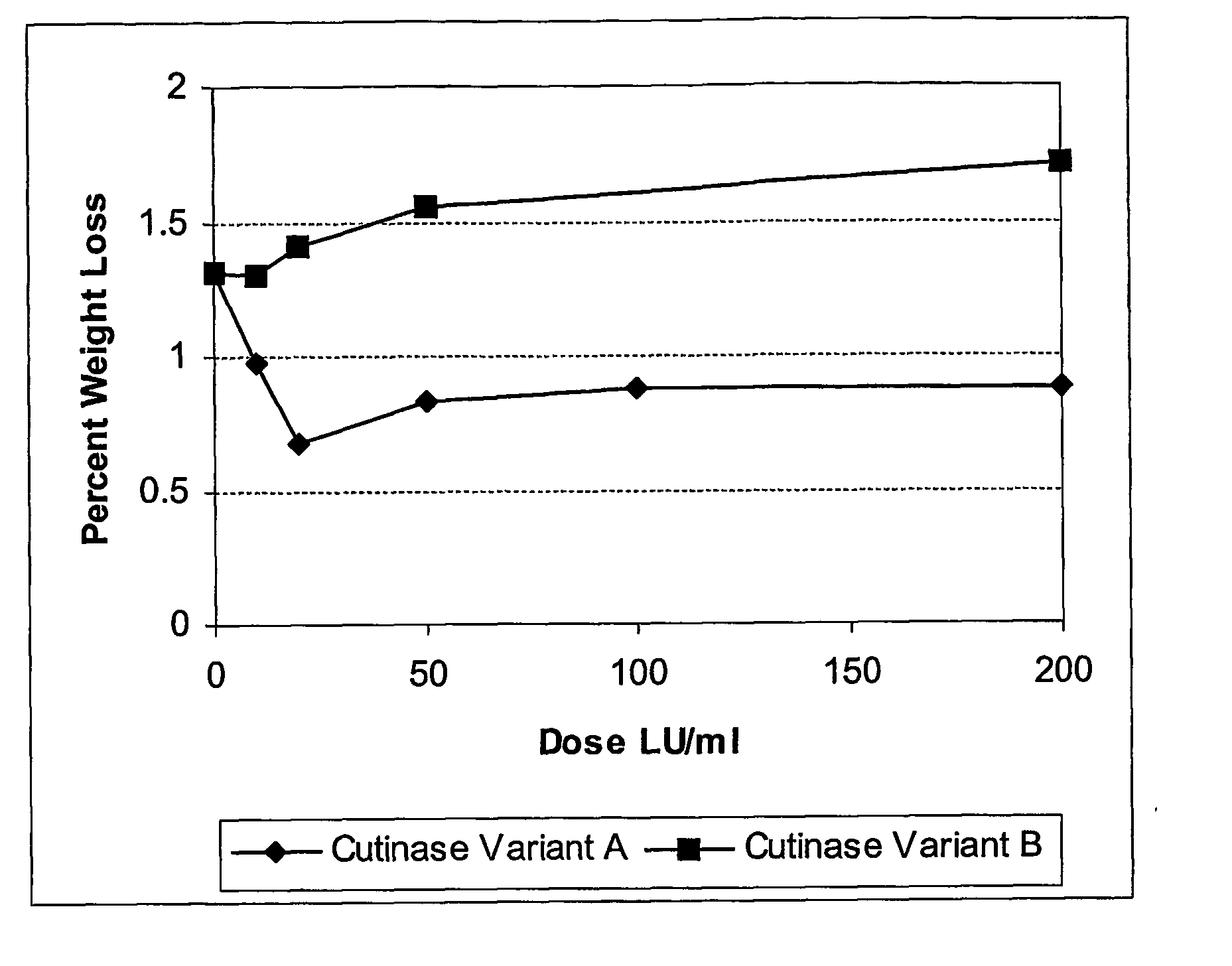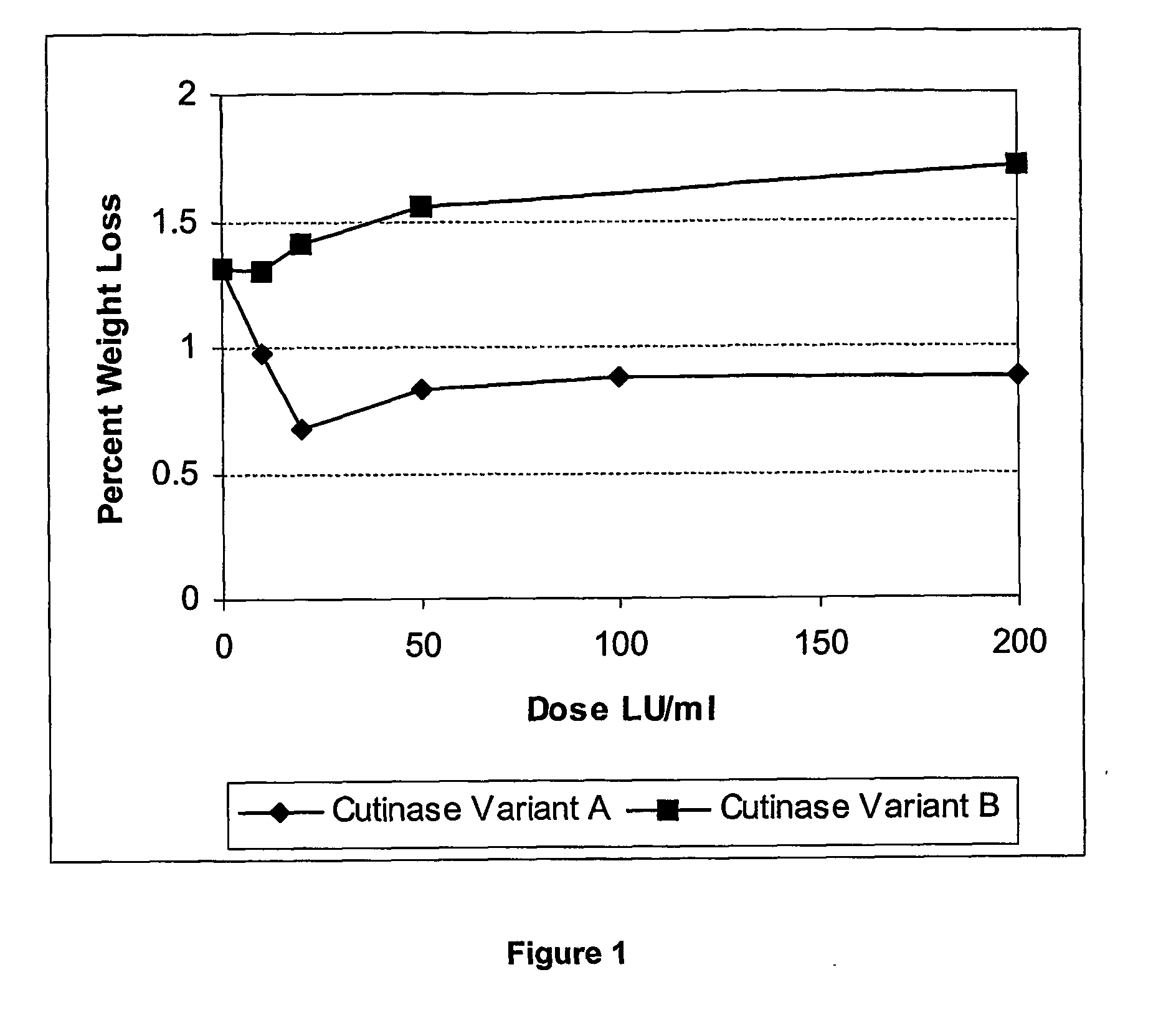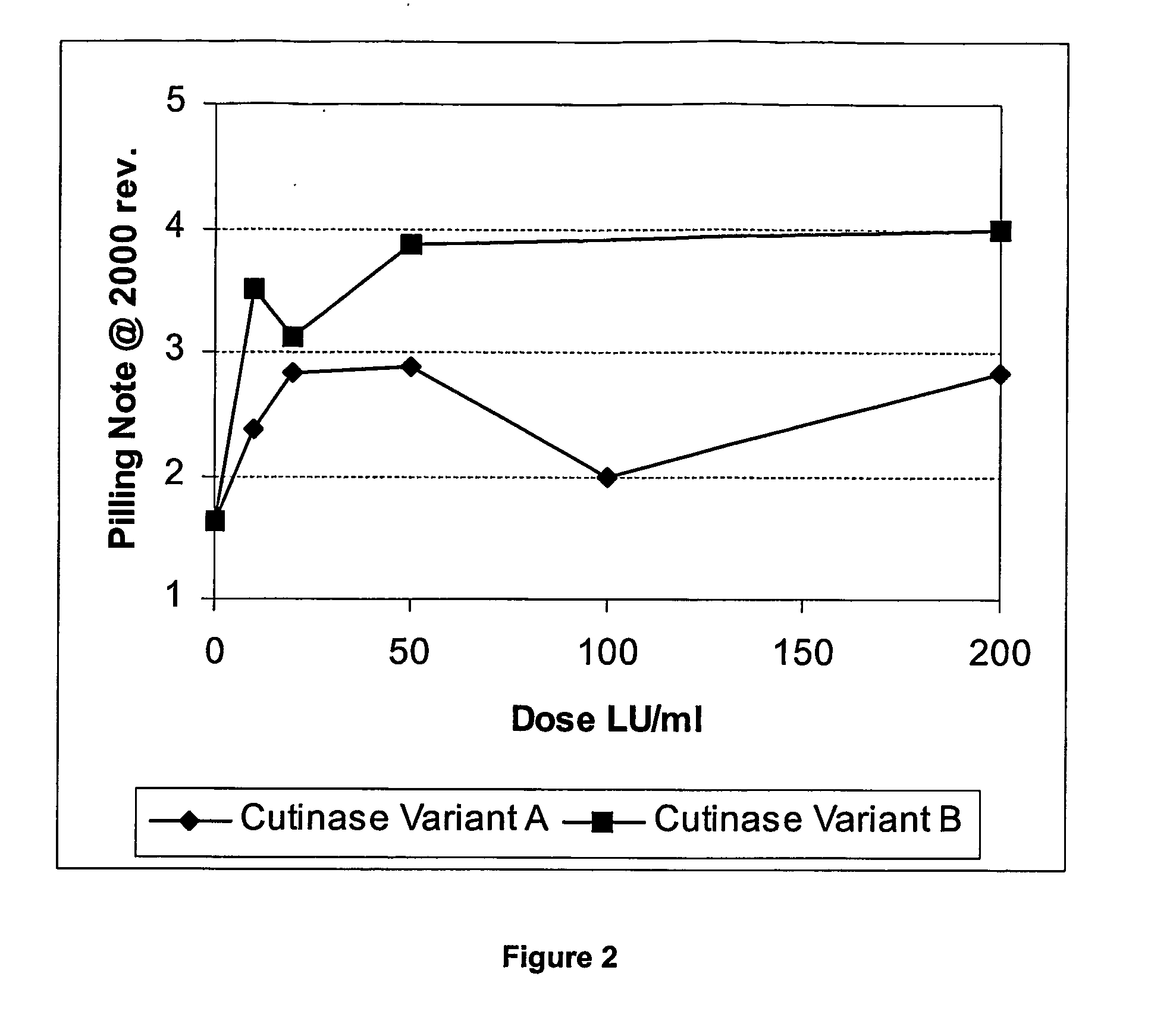Method of treating polyester fabrics
a technology of polyester fabrics and fabrics, applied in detergent compositions, detergent compounding agents, abrasion resistant fibres, etc., can solve the problems of fabric pilling propensity, fabric pilling, color and general hand damage, and achieve the effect of reducing the pilling propensity of polyester fabrics and garments
- Summary
- Abstract
- Description
- Claims
- Application Information
AI Technical Summary
Benefits of technology
Problems solved by technology
Method used
Image
Examples
example 1
Hydrolytic Activity
[0078] This example described an assay for determining the terephtalic acid diethyl ester (ETE) and / or an ethyleneglycol dibenzyl ester (BEB) hydrolytic activity of an enzyme.
ETE Hydrolytic Activity
[0079] An ETE hydrolytic enzyme of the invention is an enzyme capable of hydrolyzing terephtalic acid diethyl ester (ETE), as determined by the following assay.
[0080] In a test tube, 0.250 ml of 0.20 M glycylglycine pH 8.5, and 0.250 ml of 10.0 mM terephthalic acid diethyl ester (ETE) in 1,4-dioxane, is added to 2.000 ml of de-ionized water.
[0081] The mixture is pre-incubated under stirring at 30° C. for approximately 15 minutes, followed by the addition of 25.0 micro g of enzyme in the lowest possible volume. This mixture is then subjected to incubation under stirring at 30° C. for 16 hours.
[0082] The reaction mixture is analyzed on a reverse phase HPLC, ODS (octa dodecyl silicate) column, and eluted with increasing concentration of acetonitrile and decreasing c...
example 2
Reduced Pilling Propensities
[0093] 140 ml 50 mM Sodium Bicarbonate buffer pH 8 was added to each Launder-O-Meter beaker including 20 steel balls. The beakers were equilibrated at 70° C. Two woven 100% polyester swatches (approx. 14×14 cm each) were added to each Launder-O-Meter beaker. Enzyme (Humicola insolens cutinase) was added at different dosages and with and without the addition of Triton X-100 dosed at 1 g / L including a blank without enzyme. The swatches were incubated for 4 hours at 70° C. in the Launder-O-Meter turning at 42 rpm. After incubation the swatches were given a short rinse in a household laundry machine and tumble dried for 1 hour.
[0094] Pilling measurements are measured using the Martindale pilling tester (Swiss standard SN 198525).
[0095] The results are shown in table 2.
TABLE 2Pilling note for 100% polyester fabricCutinaseRevolutionsBlank -Cutinase50 LU / mL and1 g / L Tritontestedno enzyme50 LU / mL1 g / L Triton X-100X-100 only125 rev.2.7543.253.5500 rev.23.252....
example 3
Bio-Polishing of 100% Polyester
[0096] The bio-polishing effect of two Humicola insolens ETE and / or BEB hydrolytic enzymes (in the form of two cutinase variants, referred to as cutinase variant A and B, respectively), were tested on 100% polyester as described in the “Materials & Methods” section. The 100% polyester fabric was scoured, rinsed and dried as a preparation to enzymatic treatment. Initially the polyester fabric was enzymatically degraded with cutinase variant A and cutinase variant B, respectively. Cutinase variant B gave higher weight loss than that of cutinase variant A, whereas cutinase variant A gave little to no weight loss compared to a blank (see FIG. 1). A blank is defined as a treatment performed where no enzyme is added.
[0097] Both enzymes gave improvement on pilling note compared to the blank at 2000 revolutions (see FIG. 2). Although there was little to no weight loss for cutinase variant A, an improvement in pilling note was observed as compared to the blan...
PUM
| Property | Measurement | Unit |
|---|---|---|
| pH | aaaaa | aaaaa |
| pH | aaaaa | aaaaa |
| pH | aaaaa | aaaaa |
Abstract
Description
Claims
Application Information
 Login to View More
Login to View More - R&D
- Intellectual Property
- Life Sciences
- Materials
- Tech Scout
- Unparalleled Data Quality
- Higher Quality Content
- 60% Fewer Hallucinations
Browse by: Latest US Patents, China's latest patents, Technical Efficacy Thesaurus, Application Domain, Technology Topic, Popular Technical Reports.
© 2025 PatSnap. All rights reserved.Legal|Privacy policy|Modern Slavery Act Transparency Statement|Sitemap|About US| Contact US: help@patsnap.com



